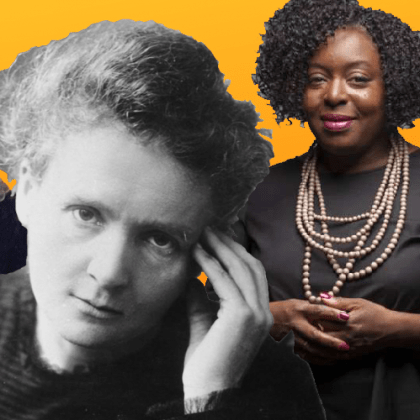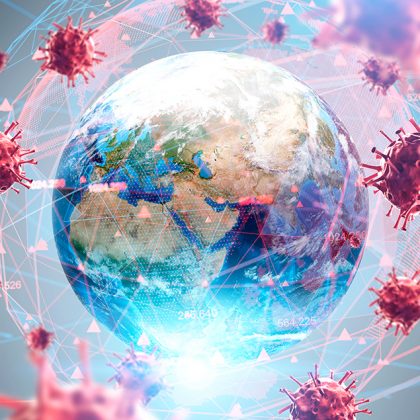“New” Human Rights and Human Dignity
Introduction
Some “new” rights have recently been added to the international human rights catalogue, such as the human right to a clean, healthy, and sustainable environment. These new rights protect global public goods, i.e. goods that benefit the totality of all States and all individuals together. They are thus different from the “old” human rights, such as the right to life, the right to liberty and security of person, the right to liberty of movement, and so on, whose beneficiary is the individual as individual.
Whilst the academic community is busy promoting these new rights, some of the “old” human rights are challenged in fundamental ways in various parts of the world, including in Asia. Think of the many limitations placed on the enjoyment of the right to privacy, the freedom of movement, and the freedom of expression during the global fight against the coronavirus. For almost three years now, many people have been living in constant fear of the next compulsory quarantine or lockdown. Health monitoring and surveillance tools are used to track the behavior and movements of individuals, and one might wonder whether this is done exclusively for public health aims. Such measures restrict the enjoyment of certain human rights and freedoms to such an extent, that it becomes a considerable challenge to freely shape one’s own life in pursuit of happiness, and to realize one’s hopes, dreams, ambitions, and aspirations for the future.
All this raises the question whether the focus of the academic community on developing and promoting these “new” rights may lead us to drift away from protecting the very essence of human rights, which in turn makes the “old” rights more vulnerable to contestation.
In a resolution entitled Setting International Standards in the Field of Human Rights of 4 December 1986, the United Nations (UN) General Assembly explicitly requested that all “new” human rights had to be “of fundamental character and derive from the inherent dignity and worth of the human person.” They also had to be “sufficiently precise to give rise to identifiable and practicable rights and obligations”, and they had to “attract broad international support.” These criteria were intended to prevent the emergence of over-imaginative human rights, such as the “right to sunshine”, the “right to a sex break”, and the “right to drink oneself to death without interference” (the examples were taken from Mirko Bagaric & James Allan, “The Vacuous Concept of Dignity”, p. 258).
The question is whether the human right to a healthy environment meets the criteria set by the General Assembly in 1986, especially the requirement that all “new” human rights must derive from the inherent dignity and worth of the human person. And if not, whether this undermines efforts to protect the “old” human dignity-based rights. It is quite telling that the resolutions of the UN Human Rights Council and the UN General Assembly on the human right to a clean, healthy, and sustainable environment do not mention the term “human dignity” at all, not even once. That does not necessarily mean there is no such link, but it does show the need to address the question this post seeks to raise.
To do so, this post first reminds the reader of what human dignity-based rights are all about, and then it assesses whether the human right to a healthy environment fits within the framework of human dignity-based rights. It ends with some concluding reflections.
Human Dignity as Foundation for All Human Rights
What does it mean that human rights are based on the value of human dignity? Since its establishment in 1945, the United Nations organization has deliberately refrained from adopting a strong position on the conceptual basis of human rights. As the UN represents the entire global community, it could not choose one theory over another. Thus conceptual ambiguity was the only approach available to it. Nevertheless, some ideas have been generally accepted (see this chapter of my doctoral dissertation for a more detailed analysis). There is no doubt that the global formulation of human rights was a direct response to the barbarities of the Second World War. Never again should a State be allowed to treat its own citizens in the way that they were treated by the Nazi regime. Never again would the international community fail to respond to grave violations of the human dignity of individual people or fail to halt the mass atrocity crimes of genocide, war crimes, ethnic cleansing, and crimes against humanity.
In essence, human dignity is the state or quality of being worthy of honor or respect by virtue of being human. Human beings cannot – voluntarily or involuntarily – lose their dignity. This does not mean that all individuals are in fact being treated with dignity and respect from the moment they are born. Certainly, many people lead a life of abject poverty and indignity. The idea is that no matter how badly they are treated, people never lose the inherent dignity that came with birth. When a person demands respect for his or her human dignity, he or she is essentially demanding to be considered not as a mere object, but as a human being. He or she demands to be treated with respect, and not to be humiliated, or dehumanized.
Human rights protect individuals from attacks on their inherent dignity. You do not need to be an international law professor to know what these rights are, and how to identify an attack on them. In fact, any ordinary person in any of the world’s villages or cities can come to know in a natural manner – unaided by experts or expertise – that people everywhere have certain rights inherent in the human person from the moment of birth. And it should not take anything more than ordinary human empathy to understand that certain things are an affront to human dignity. Or to put it in even simpler terms, all people recognize a violation of human dignity when they see it, even though they cannot tell you in abstract terms what human dignity is. It is easier to understand what is contrary to human dignity than what is in accordance with it, and thus one of the best ways to explore what human dignity really means, is to start from the experience of indignities suffered by human beings in concrete situations. This is exactly how the atrocities committed during the Second World War led to the Universal Declaration of Human Rights of 1948.
This idea, i.e. that the human dignity of individuals should be protected from tyranny and dehumanization, and that it is the responsibility of the international community to provide this protection, sent forth its roots far beyond the world of international lawyers. It is also what drove people like Elie Wiesel, a human rights activist, Nobel laureate, and Holocaust survivor. He said the following about his activist motivations when he was interviewed by Chris Kijne (a Dutch journalist) in 2006:
“For a victim to be a victim is already bad. And painful. And disrupting. But in addition to that, when a victim feels alone; that’s the worst. […] All my activities in the field of human rights [aim to achieve] at least that: I don’t want a prisoner of conscience in his or her cell to feel alone. I don’t want a child who is hungry somewhere in Africa, and his or her mother, to feel alone.”
The question is whether this human dignity-based approach to human rights is still the dominant approach, and if so, whether “new” human rights, such as the human right to a healthy environment, fit within that classic narrative.
Human Right to a Clean, Healthy, and Sustainable Environment
Both the UN Human Rights Council and the UN General Assembly recently adopted a resolution on the human right to a clean, healthy, and sustainable environment. Let us look at the link between this right and the value of human dignity.
It is obvious that a clean, healthy, and sustainable environment is a necessary precondition for the enjoyment of many long-established and universally recognized human rights, including those with a clear link with human dignity. Negative impacts or damage done to the environment hinder the enjoyment of such rights. However, that does not necessarily mean that damage done to the environment in itself constitutes a direct attack on that human dignity. In other words, it is clear that you cannot live a life in dignity without a healthy environment. But this is obvious: without a healthy environment, you cannot live a life at all. You will die. The same rationale can be applied to the human right to water, food, housing, oxygen, sunshine, and so on. However, that is a different connection to human dignity than the more immediate connection between this value and the more classical international human rights, such as the right not to be subjected to torture, the right to freedom of expression, the right to choose your own religion or to be a non-believer, the right to choose the way your life ends, the right to privacy and bodily autonomy and integrity, the right to choose the person you fall in love and wish to share your life with, and so on. Any breach of the latter “old” type of human rights constitutes a direct and often deliberate attack upon the dignity and freedom of the individual.
No one will deny that a healthy environment is important, and that it deserves a particularly high legitimacy status at least from an emotional and moral point of view. But that is not necessarily a reason to label it as a human right. After all, a new human right can only be meaningful when it is defined in such a way that it can be invoked by an individual person in specific and concrete situations directly affecting their daily life. As mentioned in the introduction of this post, a “healthy environment” is more like a (global) public good. Global public goods benefit the totality of all States and all individuals taken together. This is why a human right to enjoy a global public good is so problematic, because any limitation to enjoy such a good is automatically felt by all the world’s people, and thus does not affect one single individual, and thus cannot be linked to the protection of a specific individual’s human dignity. In other words, the beneficiary of global public goods is the world’s population, perhaps even including future generations; it is not the individual as individual. All people will be affected by changes in the environment due to climate change, such as heat waves, droughts, heavy rains, sea-level rise, and so on. And all people are vulnerable to risks from infectious diseases like the coronavirus. But these are not deliberate attacks on a specific person’s inherent dignity.
Concluding remarks
The idea that international human rights exist primarily to protect the individual from attacks upon his or her dignity is not universally shared. Some States see human rights primarily as an integral part of their State-led socio-economic emancipation programs. In such case, human rights are guaranteed and respected, provided they contribute to the socio-economic goals set by the State. Ultimately, it is the State that draws clear boundaries. Environmental rights – such as the right to a healthy environment – fit much better in such an approach to human rights than the “old” rights – such as the right to privacy, freedom of expression, freedom of religion, and other rights with a direct link with human dignity. If the academic community promotes the further development of the “new” human rights, and neglects the older ones, then it risks contributing to a shift towards this particular understanding of international human rights law.

Otto Spijkers is professor of international law at the China Institute of Boundary and Ocean Studies (CIBOS) and Research Institute of Environmental Law (RIEL) of Wuhan University, China. He is also the Managing Editor of the Chinese Journal of Environmental Law (CJEL).
Find more on this topic from the Asian Journal of International Law.






